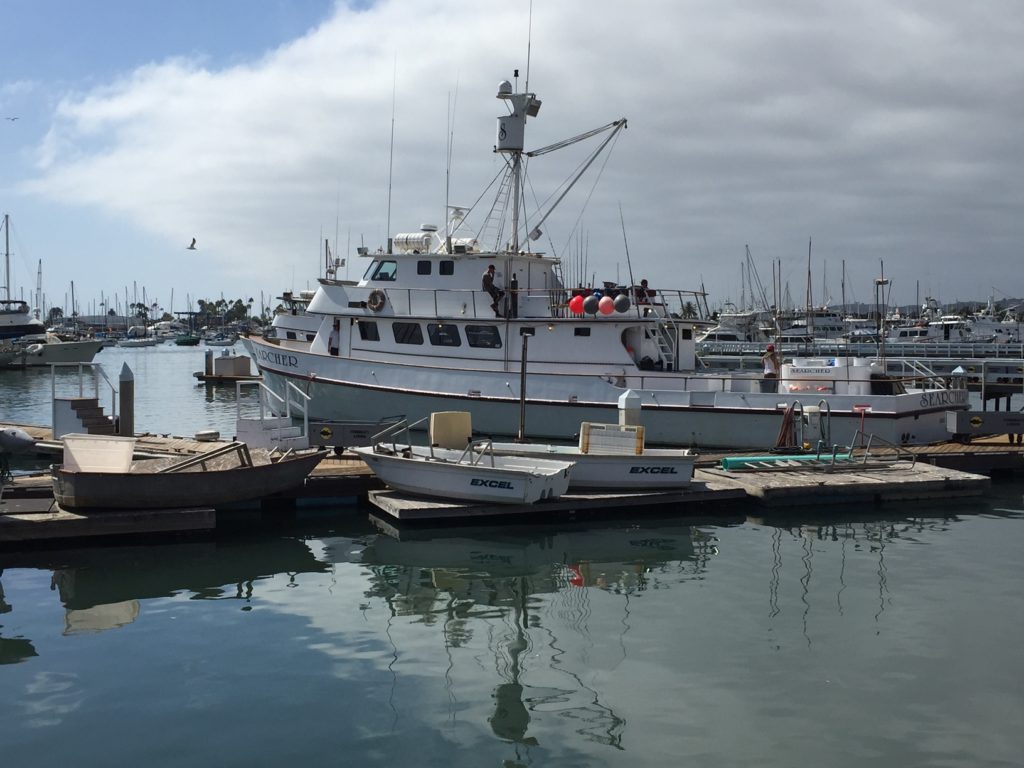
I signed up for the Searcher’s 5-day pelagic birding expedition out of San Diego about 18 months ago when I learned last year’s trip was already full, and have been excited about yet in a way havemdreaded the trip ever since. Excited about 5 days of potential rare sea birds, meeting some of the great ABA pelagic birders, and almost certain life birds. Dreading sea-sickness, boredom and time away from family. As it turns out most of the dreads were unnecessary. Seas were considerably rougher than I had experienced on either day trip out of San Diego in the past, but tolerable, and I never came close to real sea-sickness, though some of the other passengers were uncomfortable, and one was quite ill. The boredom issue was minor, with good conversations covering the occasional hour or two without good birds. The leaders, especially Todd McGrath and big Dave Pereksta have both done this trip almost yearly since 2003 and had studied factors like depth charts, water temperature charts, and satellite “bionutrient charts” to calculate a route, and were in touch with local whale watching ships to adjust the route daily. As a result we were in pretty “birdy” water for most of the trip.
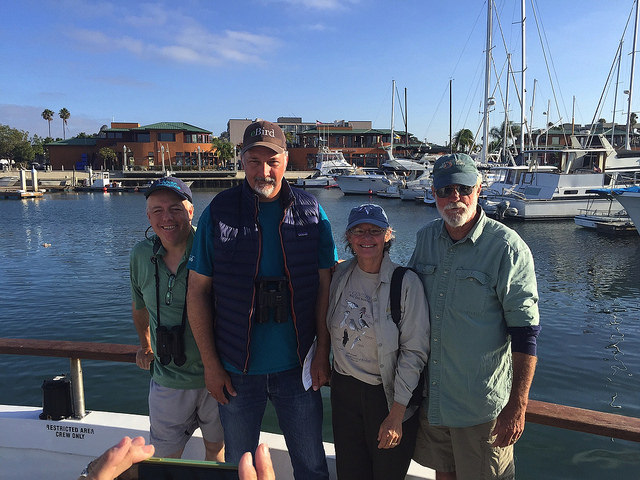
I’ll not try to describe the route, as the Searcher captain has a blog with daily posts that summarize much of this better than I can. see SEARCHER CAPTAINS BLOG
At noon on Labor Day, Sept 5th we headed out of San Diego to the nine mile-bank at the US Mexico border then turned north to cover the whole nine-mile bank. From there we went out to the 30 mile bank and spent the rest of the daylight hours in those waters. On day one I got barely adequate looks at my first trip lifer, Craveri’s Murrelet. Five birds, an unusual congregation as they are usually in pairs (the male and the one chick) at this time or the year. Other good birds were Black and Least Storm-petrels, several Pomerine jaegers, and lots of common terns.
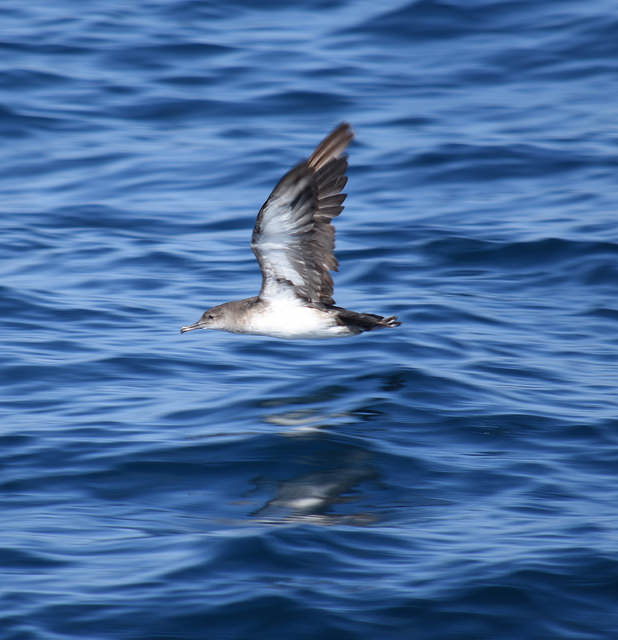
We headed north and cruised north all night. This was by far the roughest water we encountered at night, and we were tossed around in our bunks a bit. Still I slept fairly well with a double dose of meclazine. We awoke the next morning and spent the next day in the channel island waters.
The second (first full) day at sea was highlighted by marine mammals. In the channel we came onto a vast red ocean of krill, the primary food of baleen whales and an estimated 50 Blue whales, 14 Fin whales, and 12 Humpback whales were all around us. We floated around them for nearly 2 hours and it was awe inspiring. Great looks at large numbers of Long-tailed jaegers were the best birds of the day IMO.
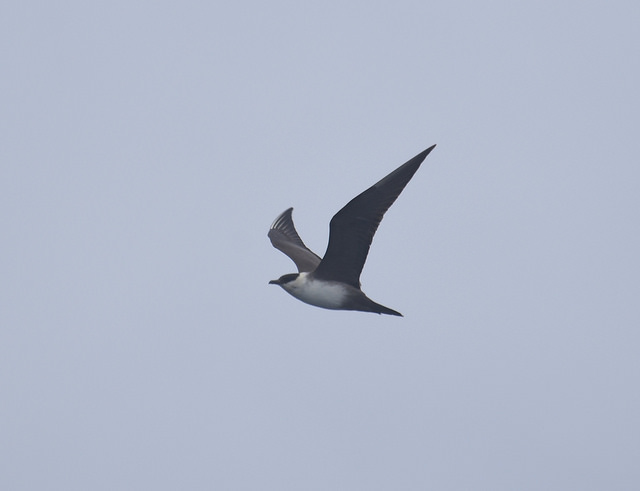
We anchored for the night in the lee of Point Conception and headed to sea about 4 AM. The next two days were deep water days, slowly heading south weaving from one high-nutrient water area to another. Out in deep waters the birding was slower, but still not boring. We had lots of storm petrels, mostly initially nominate Leech’s, but as we got out deeper and turned south a significant percentage were the smaller, bright white-dumped new species the Townsend’s Storm-petrel. We also found a Red-billed Tropicbird that I spotted at the same time as a couple of others and we all yelled out together. It was very obliging giving great views in flight and on the water. Most of the rest as we headed south were the dark-rumped small Chapman’s race (apparently no longer a “true” sub-species). This was lifer #2 for the trip, and I was very pleased to get so many excellent views.
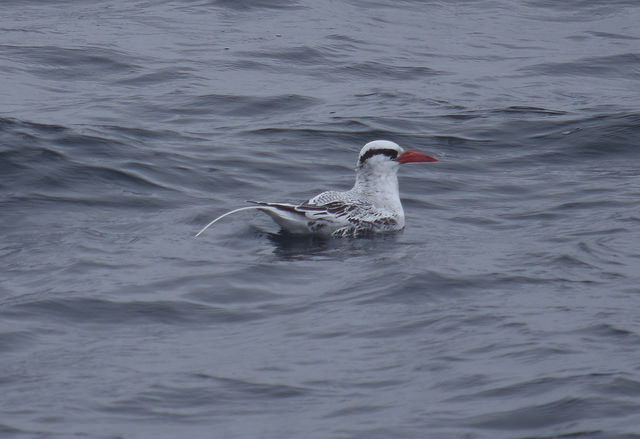
On day 4 we awoke after cruising all night southward in the area of numerous deep canyons, and continued to have lots of the southern types of the Leech’s complex of storm petrels. This may have been my favorite day at sea, what following swells, calm sea, and we had killer looks at both Guadalupe’s murrelet and Craveri’s murrelet. The difference between these two is not too tough, but to differentiate Craveri’s from the very similar Scripp’s murrelet is not easy, and I was very happy to have about 20 minutes right beside a pair feasting on a bait-fish flock. We heard them calling their two-part trill, and got lost of photos and looks. As we were about to leave the Guadalupe, our second Red-billed tropicbird of the trip flew in to circle us for several minutes, and then a brown booby flew up from the stern and stuck around for photos and nice looks.
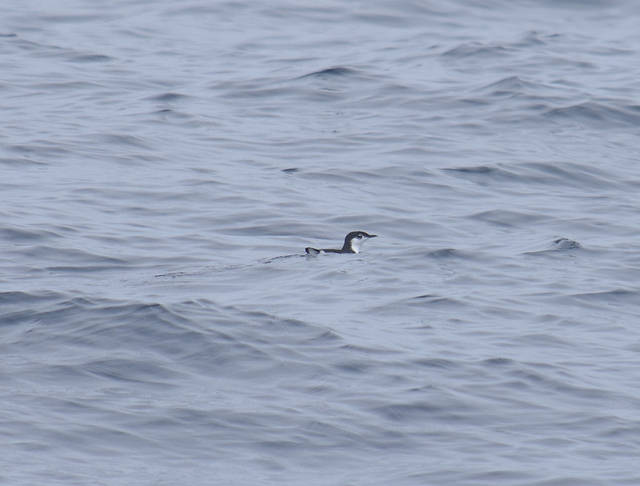

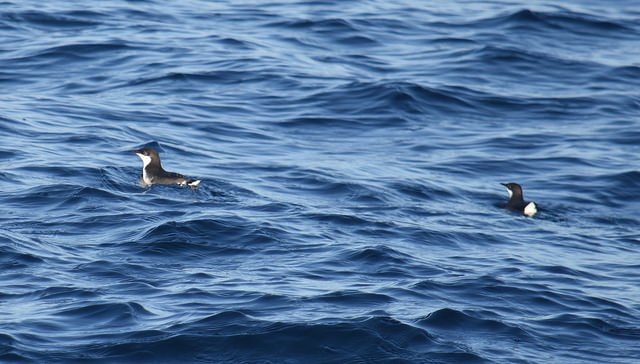
The last night we cruised and drifted towards the nine-mile bank again where from the crack of dawn until 8 AM we birded our way to shore. Many Red-necked phalaropes, Black Storm-petrels and Black-vented shearwaters were seen again, at least 2 Least Storm-petrels were located, and we got to the dock at 8 AM. ON arrival I tried to check in for my 2:30 PM Alaska flight, to learn that I had booked the flight for yesterday. They were very reasonable and for a modest fee I got on a 10 AM flight home, where Kay was great to change plans and pick me up.
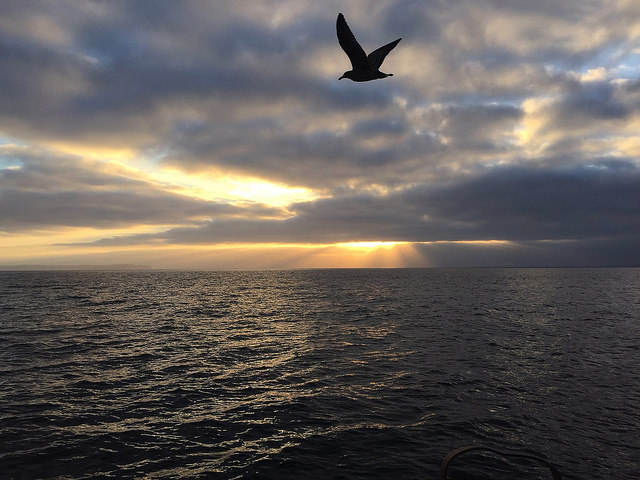
3 ABA life-list birds, up to 708 now, a life-time experience, and home safely. Yahoo!
Each night the leaders posted on a white board the day’s and trips sightings, and here is a photo of the end of trip list.

Here is a link to my Flickr Album of the trip
Here are links to a map of the trip route done by Gary Hodne using an app called Navionics.

That really was a trip of a lifetime, Ed! I am blown away!